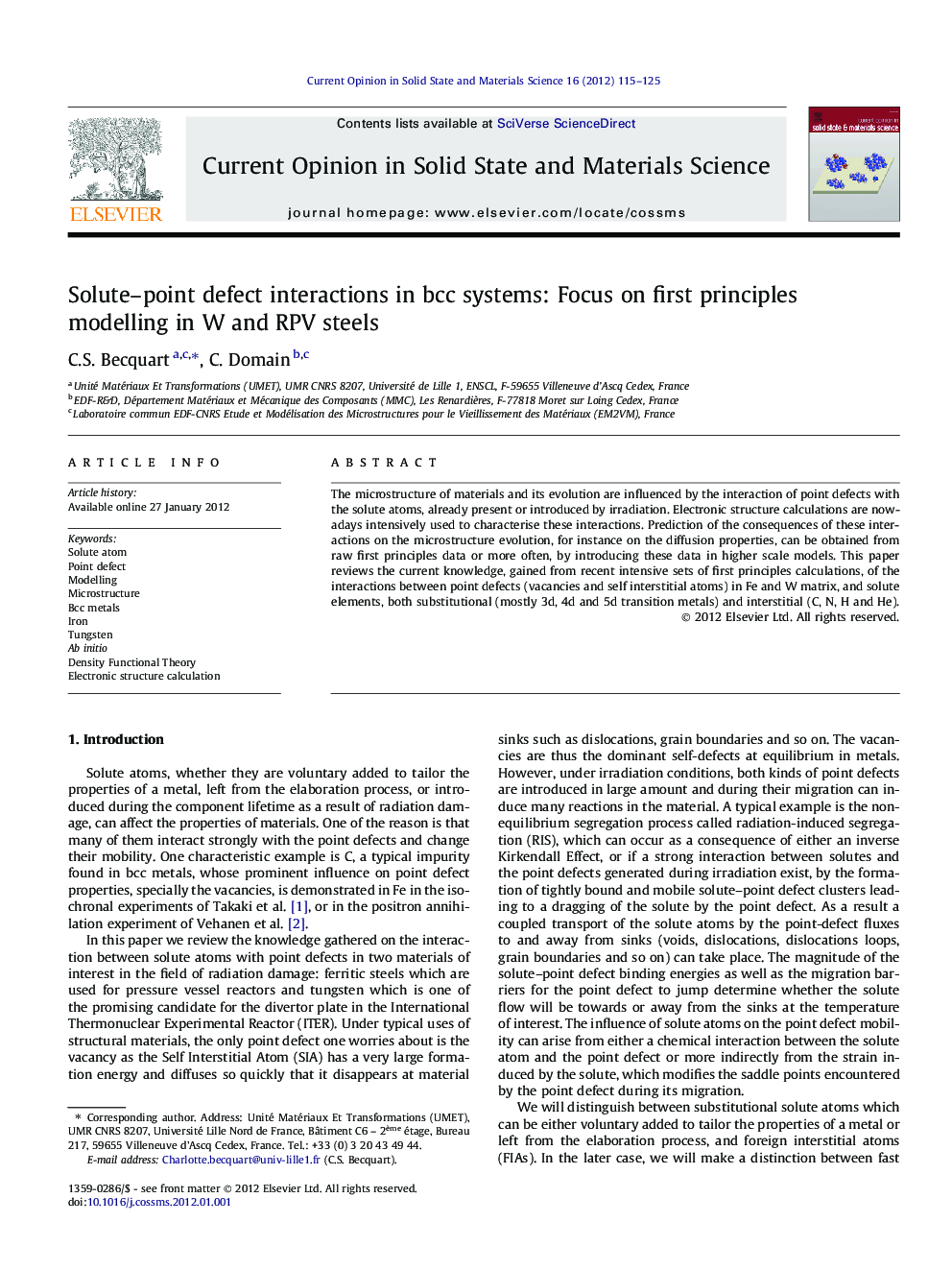| کد مقاله | کد نشریه | سال انتشار | مقاله انگلیسی | نسخه تمام متن |
|---|---|---|---|---|
| 1555530 | 999057 | 2012 | 11 صفحه PDF | دانلود رایگان |

The microstructure of materials and its evolution are influenced by the interaction of point defects with the solute atoms, already present or introduced by irradiation. Electronic structure calculations are nowadays intensively used to characterise these interactions. Prediction of the consequences of these interactions on the microstructure evolution, for instance on the diffusion properties, can be obtained from raw first principles data or more often, by introducing these data in higher scale models. This paper reviews the current knowledge, gained from recent intensive sets of first principles calculations, of the interactions between point defects (vacancies and self interstitial atoms) in Fe and W matrix, and solute elements, both substitutional (mostly 3d, 4d and 5d transition metals) and interstitial (C, N, H and He).
► Knowledge about the interactions between solutes and point defects in Fe and W is reviewed.
► The foreign interstitial atoms C, N, H and He all bind to vacancies and SIAs.
► Most substitutional solutes bind with vacancies in the first coordination shell for Fe and W.
► The interactions are always stronger in W than in bcc Fe.
► The stability of clusters is one of the most challenging issue.
Journal: Current Opinion in Solid State and Materials Science - Volume 16, Issue 3, June 2012, Pages 115–125